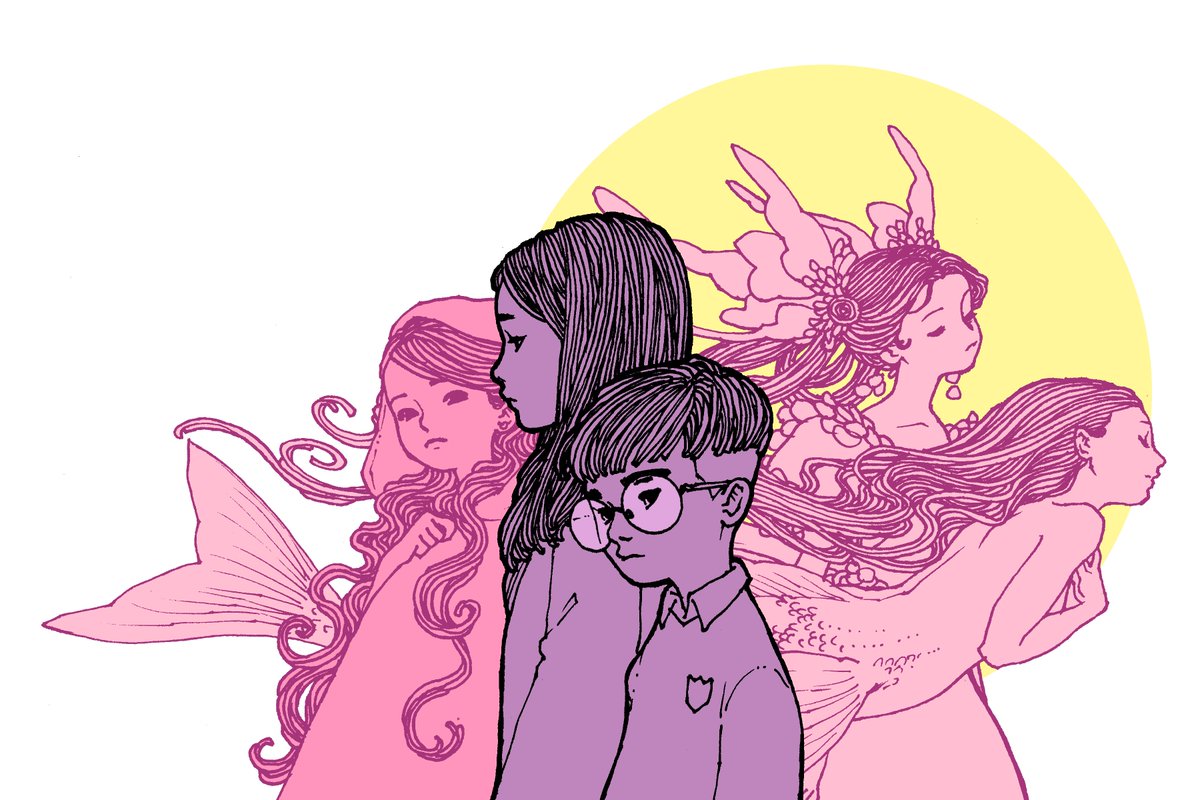
The Magic Fish
Trung Le Nguyen
A beautifully crafted coming of age story, told through the lenses of collected folklore, completely captured my attention and my heart. I genuinely lost track of time while reading it and taking in the gorgeous illustrations, and pretty much abandoned my list of questions I was writing to discuss with my teens because I was having too much fun reading. If I had to sum it up in one word, I’d laugh and give you two. The Magic Fish is tender and engrossing, and more people need to read it. There’s a reason it was nominated for so many awards :
International Literacy Association WINNER 2021
ALSC Notable Children’s Books SELECTION 2021
Bulletin Blue Ribbon Book SELECTION 2020
Cooperative Children’s Book Center Choices SELECTION 2021
Notable Books for a Global Society Award SELECTION 202
“Real life isn’t a fairytale.
-Goodreads
But Tiến still enjoys reading his favorite stories with his parents from the books he borrows from the local library. It’s hard enough trying to communicate with your parents as a kid, but for Tiến, he doesn’t even have the right words because his parents are struggling with their English. Is there a Vietnamese word for what he’s going through?
Is there a way to tell them he’s gay?”
Ultimately a little hard to classify, The Magic Fish is one of my teen book club’s newest favorites, and their first foray into graphic novels as a group. The lush and meticulous attention to detail in all the line work allowed for a multi-layered enjoyment of the story. The plot is overtaken, at times, but the folktales being told, which actually helped keep the scope of the “real life” story true. Given the wonderful hybrid nature of all its parts together, The Magic Fish is hard to pin to any one genre other than, perhaps, coming of age/coming out.
Tiến’s struggle to come out to his family, especially his mother, is poignant throughout. But before you realize it’s a coming out story (if you somehow missed the blurb), it feels more like a first generation child of immigrants story perhaps, highlighting the way language is built and learned through story. The homophobia in this book, while not as harsh or heart wrenching like in Last Night at the Telegraph Club, is still wholly accurate due to the pervasive presence of religious doctrine and dogma in American society. We’ve come some ways from there, but it’s still too prevalent of an issue amongst LGBT children raised in main stream religious households, not to mention fringe.
Finding a language to express yourself, to see yourself, is so important and life affirming for kids that are struggling to tread in the proverbial shark infested waters — which makes Tiến’s story that much more nuanced. As is discovered early on, there is no word for “gay” that he could find, even with a librarian’s help, in his mother’s mother tongue.
As Tiến’s internal conflict worsens, he still participates in the traditions of his family; namely reading aloud folktales with his mother. One of my favorite things The Magic Fish does happens when a story os being told; the color oerlay shifts, as does the style and line art, to match the person who is reading’s mind’s eye. The stories told are familiar to me as well while still feeling authentically different. Tam Cam isn’t just “Vietnamese Cinderella” as some might try to spin it. It is its own story — replete with magic, dark karmic consequences, and a happy ending. The hallmarks of the original Grimm tales, to be sure, which brings up the point I loved asking readers to consider — how did the same core stories seem to find their ways around the globe? Dragons appear across cultures, as do fairies and sprites, spirits, and the versions of “classic” (read: Eurocentric) fairy tales, some of which are in this piece. How do our versions of those stories, or the ones we gravitate towards shape us? How do we shape stories?
It was a little hard to place when this story was happening for me, not until I got about one third of the way through and news of the brutalization of Matthew Shepard broke. 1998, then. What was interesting to hear was if my teens considered it historical fiction or not given the recent news that American Girl’s latest doll is from the 1980’s. They never really figured out where they drew the line for historical fiction; and my argument that it really depends on the audience is potentially too out there; though the influx of books set in the 90’s labeled “historical fiction” on Goodreads is increasing (Baby & Solo, for instance). More food for thought if you choose to read this with others: what makes a book historical fiction?
It’s hard to say just what about this book makes it so much more outstanding than others I’ve read in a similar vein, but I think it might be how Nguyen captures and fragments reality, as well as what it means to tell and see a story, perfectly. This is a story that will stir warm emotions in you without hiding from the way “well-meaning” folks can still be hurtful. It is lush and carefully, painstakingly illustrated. The line work alone will make you stop in awe with every page turn.
